Keith Rabua: Project Management

Stanford course CS183B: How to start a startup . Started in 2012 under the leadership of Peter Thiel. In the fall of 2014, a new series of lectures by leading entrepreneurs and Y Combinator experts took place:
Second part of the course
First part of the course
- Sam Altman and Dustin Moskovitz: How and why to create a startup?
- Sam Altman: How to form a start-up team and culture?
- Paul Graham: Illogical startup ;
- Adora Cheung: Product and Honesty Curve ;
- Adora Cheung: The rapid growth of a startup ;
- Peter Thiel: Competition - the lot of losers ;
- Peter Thiel: How to build a monopoly?
- Alex Schulz: An introduction to growth hacking [ 1 , 2 , 3 ];
- Kevin Hale: Subtleties in working with user experience [ 1 , 2 ];
- Stanley Tang and Walker Williams: Start small ;
- Justin Kahn: How to work with specialized media?
- Andressen, Conway and Conrad: What an investor needs ;
- Andressen, Conway and Conrad: Seed investment ;
- Andressen, Conway and Conrad: How to work with an investor ;
- Brian Cesky and Alfred Lin: What is the secret of company culture?
- Ben Silberman and the Collison Brothers: Nontrivial aspects of teamwork [ 1 , 2 ];
- Aaron Levy: Developing B2B Products ;
- Reed Hoffman: On Leadership and Managers ;
- Reed Hoffman: On the leaders and their qualities ;
- Keith Rabois: Project Management ;
- Keith Rabua: Startup Development ;
- Ben Horowitz: Dismissal, promotion and reassignment ;
- Ben Horowitz: Career advice, westing and options ;
- Emmett Shire: How to conduct interviews with users;
- Emmett Shire: How to talk to users in Twitch ;
- Hossein Rahman: How hardware products are designed in Jawbone;
- Hossein Rahman: The Design Process at Jawbone.
Keith Raboua : I’m going to talk about how the company’s operations should be conducted. I looked through some of the previous lectures and conclude that you have already managed to hire truly productive people and create a product that is in demand from a certain part of the user audience.
')
Also, I think you managed to raise capital, and now you want to create a company. I do not think that creating a company is much more difficult than creating a product. The main reason for this is that people’s behavior is often irrational. We all know that.

Someone from your parents, close people, brother or sister, the teacher does not exactly think about what he is doing. Creating a company as a whole is similar to how you collect all these people, whose behavior is not quite logical, in the same building and spend at least 12 hours with them. It is quite difficult.
There are several methods to solve this problem, and some cope with this successfully, others - no. However, this is the essence of company management.

The main task in creating a company is to build a kind of "business engine". First, you draw his scheme, design, develop a “design”, and it looks convincing, clear and beautiful.
But when you start to make it, it turns out to be terrible, its parts are held almost with scotch tape, and it seems that it will soon fall apart. It takes a lot of effort to ensure that it properly performs its function, so people have to work 80-100 hours a week.

This seems like a feat only because by this time the details of your engine are not yet “polished”. Over time, you will want to create a “car” that will work perfectly and you don’t have to fear that it will fall apart every minute.
And, as we usually joke, if the Martians take over eBay, it will be 6 months before the world understands this. Over time, you will want to achieve exactly this level of business automation.

As he says, Warren Buffet: “it is necessary to build a business so that even idiots can manage your company, because sooner or later they will manage it”.
That's what is really needed - to create a “car” that can be controlled by “idiots”. If you are the leader of the company, what is your actual job?
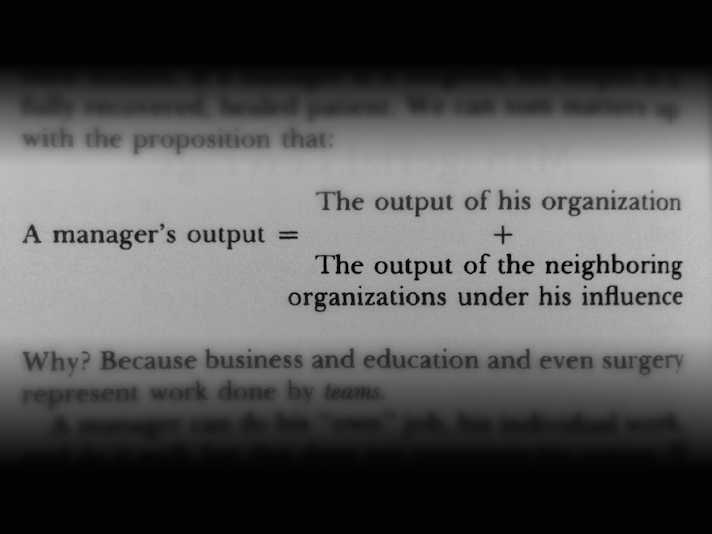
There is only one book in which this question was revealed. It is quite old and was written by Andy Grove in 1982. It gained popularity and was successfully sold.
The definition of your role in the company, given by Andy Grove, is as follows: maximize the organization's productive capacity.
The condition of your company is your responsibility, as a CEO, you are responsible for everything, including the activities of your company's vice president and the success of interaction with other organizations. If you are a technology vice president, you are responsible for the efficiency of the teams and the sales force.
This is how it is necessary to evaluate the work of people, and at the same time it is important first of all to think about the company's performance, and not about costs.
For the old approach is characterized by the neglect of the level of performance: it focuses only on tracking the progress of the company. And this may seem like a pretty attractive affair. People are attracted by the prospect of managing a huge organization and allegedly bearing “responsibility” for a high level of performance.
However, I hope that today you will be able to learn how to order cocktails, teach your secretary how to answer phone calls correctly, and for the $ 10 per hour act as a hospitable hostess for your employees. Well, let's look at this topic.
In the beginning, when you only create a company, everything looks messy. And in fact it should be. If everything works too smoothly and predictably, it may mean that you are not developing fast enough and you are not making enough original decisions.

Therefore, new problems should arise every day, and your main occupation should be a kind of “medical sorting of the wounded” —determining the seriousness of a particular problem. Someone may be disturbed by something like a “cold”, and because of this you should not worry too much and certainly should not devote all your time to solving this problem.
At the same time, some problems may look like a “cold”, but if they are not correctly diagnosed, the result can be fatal. My goal is to teach you to determine if a particular problem is a "cold" or a "deadly disease."
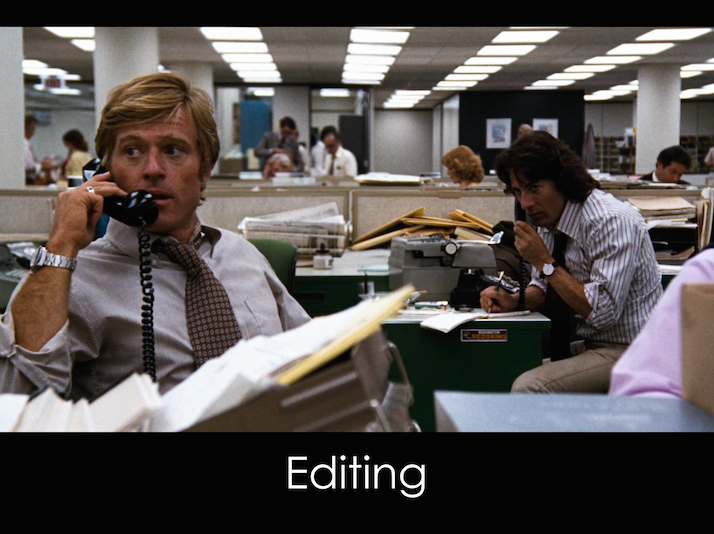
One of the most important things I learned while working in Square is the concept of “editing.” For 14 years of personnel management, I realized that this metaphor best describes the work of the administrator. Such an attitude to work is quite natural, and based on this, you and your employees can understand for themselves whether they are “editors” or “writers.”
When someone asks you to do something, thinking in this vein, you ask yourself whether you are a “writer” or “editor.” This metaphor conveys the essence of your work very well, and now we will discuss specific tasks in “editing”.
1. Simplification
Most likely, from the school, you remember the situation when you gave the sheet with the text to the teacher for verification: the first thing the verifiers do is take out a red pen and begin to cross out the wrong words or sentences. Thus, the main task of the editor is to simplify the text as much as possible.
And your job as an administrator is the same: dropping unnecessary and simplifying work for the entire team of workers. The more you simplify the workflow, the more effectively it will be implemented.
It is difficult for people to understand and carry out a large and complex system of tasks, so you need to simplify it to 1-3 operations that they could constantly perform without thinking, even visiting friends, even in the middle of the night.
Do not think that a complicated system is normal. Many people will tell you that it is too difficult to accomplish, that it is too difficult, and you will answer them: “Well, I know that others prefer to simplify tasks, but this is not for me, we are engaged in a complex business.”
This is an erroneous approach. You can change the world with just 140 letters.
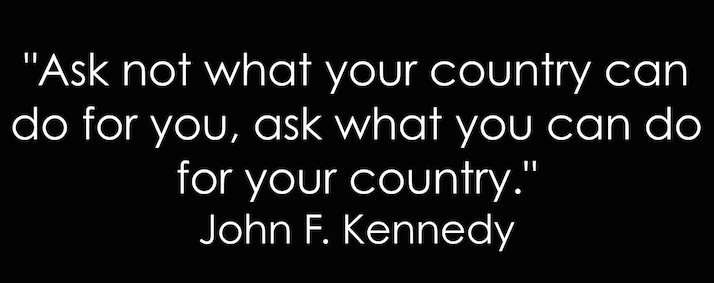
You are able to create the most successful companies in history, based on very simple concepts.

You can sell products using less than 50 letters.

I see no reason why you can not create a company in the same way. Therefore, you need to force yourself to simplify every task, product, marketing strategy — everything you do. Just pick up the red pen and start crossing out the extra.
2. Clarification
The second task of editors is to ask clarifying questions. When you give a text to check for someone, what are its actions? The reviewer usually finds any ambiguities in the text and asks if you really meant what you wrote and asks for explanations. That is your job.
Consider this situation: you are at a meeting where people will be waiting for your decisions. Your real job in this situation is to get answers to a whole lot of questions. These may be simple questions, for example, affecting the number of working days in a week or questions about what the company's advantage over its competitors is.
Investors use a similar approach, and many investors have a billion questions that you have to answer indefinitely. Therefore, you should highlight what is most important for the company, and focus only on this. This approach will allow you to conduct a dialogue with employees on the merits and quickly make decisions. It will also give the opportunity not to be distracted from your daily work - the development of the company.
Questions, however, will be asked the most common, as employees will not have some additional and unnecessary information. Learning to ask the right questions is difficult, it requires a long practice. But when you learn to do it properly, according to Andy Grove, you can increase your productivity by 30-50%.
3. Resource allocation
“Editors” think over the company's activities - this is their constant task. For example, they can take other “editors” in the Middle East who are involved in the company's business in this region and send them to work in Silicon Valley, because at the moment the company is more interested in this.
Thus, the allocation of resources can be "top down", and in this case, the administrator directs resources to a specific location. The next month, the quarter (or year), the administrator says: "The Middle East is no longer very interesting, and we are no longer doing this, let's find another direction of activity." Either resources can be distributed “bottom-up”, as is the case when journalists themselves are looking for stories to publish.
The people you work with must take the initiative. For example, a reporter who works with Google will prepare an interesting article on the basis of the information he heard on the air, and then submit it for approval to the editor. In this case, the editor did not ask the reporter to collect information about Google. I support this approach to work.
Your goal is to use less red ink each day. Therefore, one of the ways to evaluate how successfully you manage to convey to your colleagues what is important and what is not is to analyze how much “red ink” you spend every day. If by the end of a difficult day the “red ink” is spilled everywhere, it is not so bad. However, if next month you fix even more, and after three more, more, then this is a bad sign. Therefore, to evaluate the effectiveness of their work can be based on how much "red ink" you spend.
4. Work with principles
Another important task of the editor, which is not so easy to perform for a large team of people: the company must act in the same style. If you read articles on The Economist website, then you would not think that they were written by different people. You can open any article on The Economist, and its text will look like it was written by the author of all other publications.
Ideally, information on your site, PR information, text on the packaging of your products, etc. should look like they were made by the same person. It is incredibly difficult to do. At first, you will want to prepare all the information yourself, and in the early stages it is normal for the founder of the company. However, over time, you change your mind. You will need to train employees to analyze the features of the company's style when creating a product.
For example, one page may be very different from another, and you start thinking about possible reasons for this. Perhaps the text is not properly written? Perhaps, some of their company executives do not fully understand the style in which it is necessary to arrange information about the company.
Over time, you will need to solve this problem, but for now you should start by designing everything so that each page is in the same style. It is quite difficult to implement, and almost every company has elements that are out of the general concept.
Apple is known for poor-quality performance of this task, even at the time of Steve Jobs. If you ask any employee of this company about the design of the page where recruitment ads are placed: if they look like they were created by Apple, then the answer in all cases will be “No”. Therefore, it is not possible to complete this task 100%. However, you should try to get as close as possible to this level.
5. Delegation
The next thing that causes difficulties is the assignment of work to other employees. Again, this problem is easily explained using the “editing” metaphor: most of the work is done by “writers” rather than “editors”. And in fact, in your company, you don’t have to do much of the work.
You disclaim responsibilities for the job, entrusting it to other people. The problem in this case is that you have a big responsibility. For the CEO, the founder of the company there are no excuses. He cannot say that a particular department or employee made a mistake, and thereby disclaim responsibility.
As the founder, you are responsible for every little thing, especially when mistakes are made. And the question arises, how to simultaneously entrust the work to others and not to deny responsibility? This is a very difficult task. You can go to two dangerous extremes: either to entrust almost all the work to employees and disclaim responsibility, or to control every minor process. I want to share with you a couple of tricks to solve this problem.
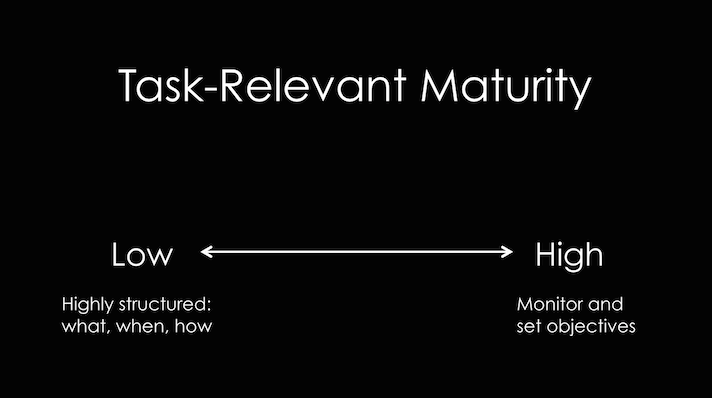
The first reception, taken from Andy Grouve’s book, is called “employee evaluation experience”. This is a beautiful definition of a simple question to the employee: “did he have to do this work before?”. And the more often he had to perform the same work in the past, the more trust he should be given.
And vice versa - the less employees are familiar with the work you give them, the more you need to instruct them and constantly monitor them. This is the most basic approach, and it should be armed.
An interesting moment, and at the same time very important, is that the general director should not apply only one management style - each employee requires a personal approach. Therefore, the work of one person must be controlled to a greater extent, if he does not have the proper experience, while another person can be assigned more work to do independently, if he already knows a lot.
It's all right if you ask questions about the performance of work for employees, and half of them ask for more control over their actions, and the other half are ready to take more responsibility. This is a normal situation and there is no problem. At the beginning of my activity, I did not understand this at all.
I was confused by the situation when people conducted surveys among employees at my request and returned with similar contradictory results. Later, I finally realized that maybe I organized the work correctly. Then I began to explain to other people that this is a normal situation for the company.
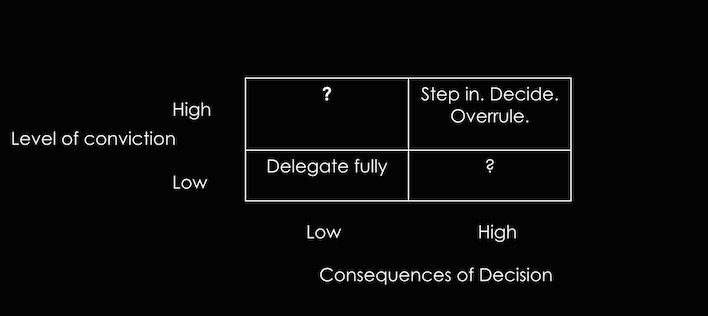
A more delicate question that I was able to find an answer, touches upon the problem of decision making. I borrowed this table from Peter Thiel , and she helped me a lot in my life. At least with her, he taught me at least something.
Here you choose the level of confidence in your decision in the range between the “highest level” and “the lowest possible”. Sometimes you are sure that your decision is wrong, and sometimes you really wouldn’t act in one way or another, but you don’t know if this is the right decision or not.
And there is also a range of severity consequences. There are situations where the wrong decision can lead to disastrous consequences for the company. And vice versa - there are situations when the result of an error does not greatly affect the success of the company.
And here I think that if the consequences of making a wrong decision in a certain situation are minor, and at the same time you are not sure of the correctness of your solution to the problem, then definitely it is worth entrusting this work to an employee. At the same time, it should be allowed to work completely independently, allowing you to make mistakes and gain experience.
On the other hand, if the consequences of a wrong decision are significant, and you are fully confident in the correctness of your judgment, then your colleague should not be allowed to make a mistake. You are solely responsible for this error, so if the problem is very serious, it should not be allowed to happen.
And the best solution in this situation will be a dialogue and an explanation to the colleague of the course of your thoughts. It is always easier to avoid any explanations, and in our world to explain something to people is a very difficult job, but you should try.
A very talented employee worked with me on LinkedIn who was very annoyed if I didn’t agree with his opinion on a specific question. Therefore, I had to spend a lot of time explaining to him why I made this or that decision.
His universal answer, if I could not fully convince him of anything, was the phrase: “Ok, you are the boss.” To me, it sounded like I was abusing my authority. Every time he said this, I realized that I was walking on thin ice and could face great trouble if I did it too often. You need to monitor how often you do this.
Source: https://habr.com/ru/post/289770/
All Articles